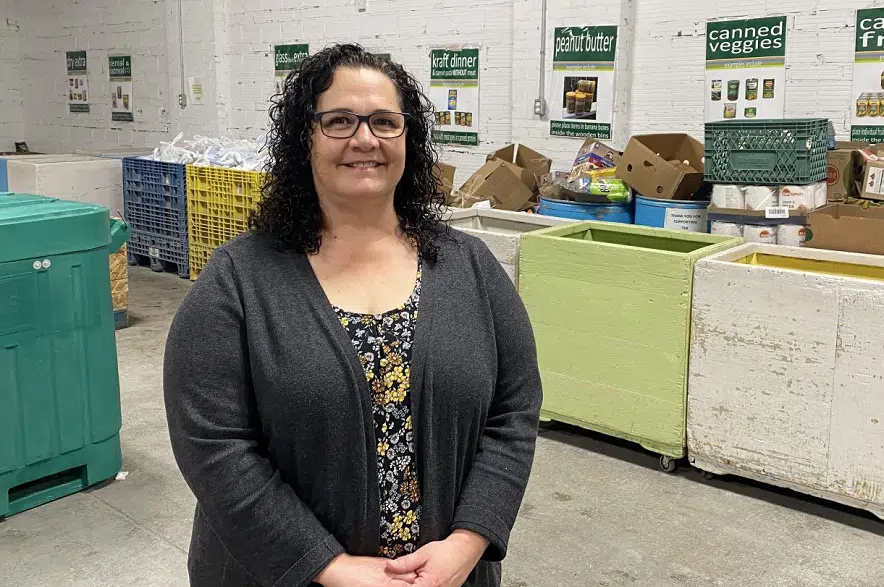Managing a budget can be overwhelming enough without factoring in international trade policy, but with the threat of tariffs it appears more people are looking for ways to manage their grocery bills and where their food comes from.
At the direction of United States President Donald Trump, 25 per cent tariffs were put on all Canadian goods imported to the U.S., on March 4.
Read more:
- Garden Talk: What should I do now to get my Sask. garden ready for spring?
- Garden Talk: Tips for planning a thriving home vegetable garden
- Egg producers, farmers’ market crack down on food safety amendment
Angie Bragg is the owner of Wrights Greenhouse near Melfort. She first noticed an increased interest in gardening during the Covid-19 pandemic.
“We’ve seen a big uptick since COVID and it’s continued on with more people interested in gardening and vegetables,” she said.
She expects interest to increase by the time her greenhouse opens on April 21, partly due to the concern of rising food costs, but also because people are more interested in the origin of their food.
“If they’re growing their own fruit or vegetables, they know it’s fresh, it’s not sprayed and it hasn’t travelled from 5,000 miles away,” she said.
According to researchers at the University of British Columbia, on average about 50 per cent of vegetables besides potatoes, and 75 per cent of fruits eaten in Canada are imported and the United States provides a large share of that. Learning about that dependency through all of the tariffs talk has consumers asking more questions.
Jackie Bantle is the departmental assistant for the University of Saskatchewan’s Plant Sciences Department in the College of Agriculture. She just gave a talk at the Gardenscape Trade Show in Saskatoon and noticed a renewed interest in home gardening.
“People are really into how they can grow their own food for cheaper,” she said. “The title of my talk was ‘What 10 Vegetables You Can Grow to Save Money’ and there was a lot of interest and participation from the crowd.”
The idea of “tariffs gardens” has popped up in horticulture communities on both sides of the border in recent weeks as a means to mitigate any disruptions in the trade flow, but Bantle said most people are interested in growing their own food because they’re concerned about cost.
“I don’t know if they’re thinking so much about the imports and exports, but it’s more about the cost of it. So, if they can store more food and use it over the winter, then they don’t have to purchase it … it saves on their grocery bill and things like winter squash, potatoes and carrots are relatively easy to store,” she said, adding people should consider learning how to can and freeze food, too.
Bragg grows her own potatoes, cucumbers, peas, carrots and tomatoes and said you don’t need a green thumb to be successful.
“I have a really small garden that is eight feet by eight feet and you just have to water and fertilize a little bit and the rewards are great. Even if I get five servings of potatoes, I’m happy with that,” Bragg said.

Laurie O’Connor, executive director of the Saskatoon Food Bank and Learning Centre. (650 CKOM file photo)
Saskatchewan food programs feeling effects of tariffs
Regina Food Bank CEO John Bailey told CJME recently he was anticipating the impacts of the U.S. tariffs could include job losses as well as increased food prices.
“When those two things start to happen, we sort of naturally start to see a demand uptick,” he said. “Based on our current trajectory, it’s not a great thing to add another complication to that.”
Bailey said staff are fairly concerned about the situation because of all the unknowns.
That includes bulk ordering food items from the United States, as well as items that would most likely see an immediate impact, like canned goods.
“Making sure that we have more than normal supply of those things, because they’ll last, so if this is just a blip, there is no harm, no foul,” he said. “But if this does have extended pieces, we have a bit of a stockpile before we really start feeling those price crunches on our end.”
The Saskatoon Food Bank had similar concerns.
Executive director Lori O’Connor said she believes the greatest impact will be big job losses due to the tariffs, which will result in more people needing to use the food bank, as well as a decrease in how much people can donate.
“If we had a clear path to what this might look like in six months, we would be better prepared to address it, so now we just prepare for the worst.”
Concerns about food security has also led to an increase in inquiries at the Prince Albert Food Box program. It’s a non-profit that offers fruit, vegetables and pantry staples at a reduced price to help increase access to healthy food.
“I haven’t had anybody specifically speak to the trade war,” said Lori Galbraith, PA Food Box coordinator.
“I just know we are rising constantly in numbers. For instance, in February we had seven new clients order food boxes and in March we had 13, which tells me the need is out there and people are concerned about grocery costs and being able to provide healthy, nutritious, fruits, vegetables and food.”
Galbraith said her clientele come from all walks of life with varying financial incomes.
Just what sort of impact the tariffs may have on produce remains to be seen. President Donald Trump is expected to apply sweeping tariffs on U.S. imports on Wednesday which he has called “liberation day.”
— by Teena Monteleone, with files from 980 CJME’s











